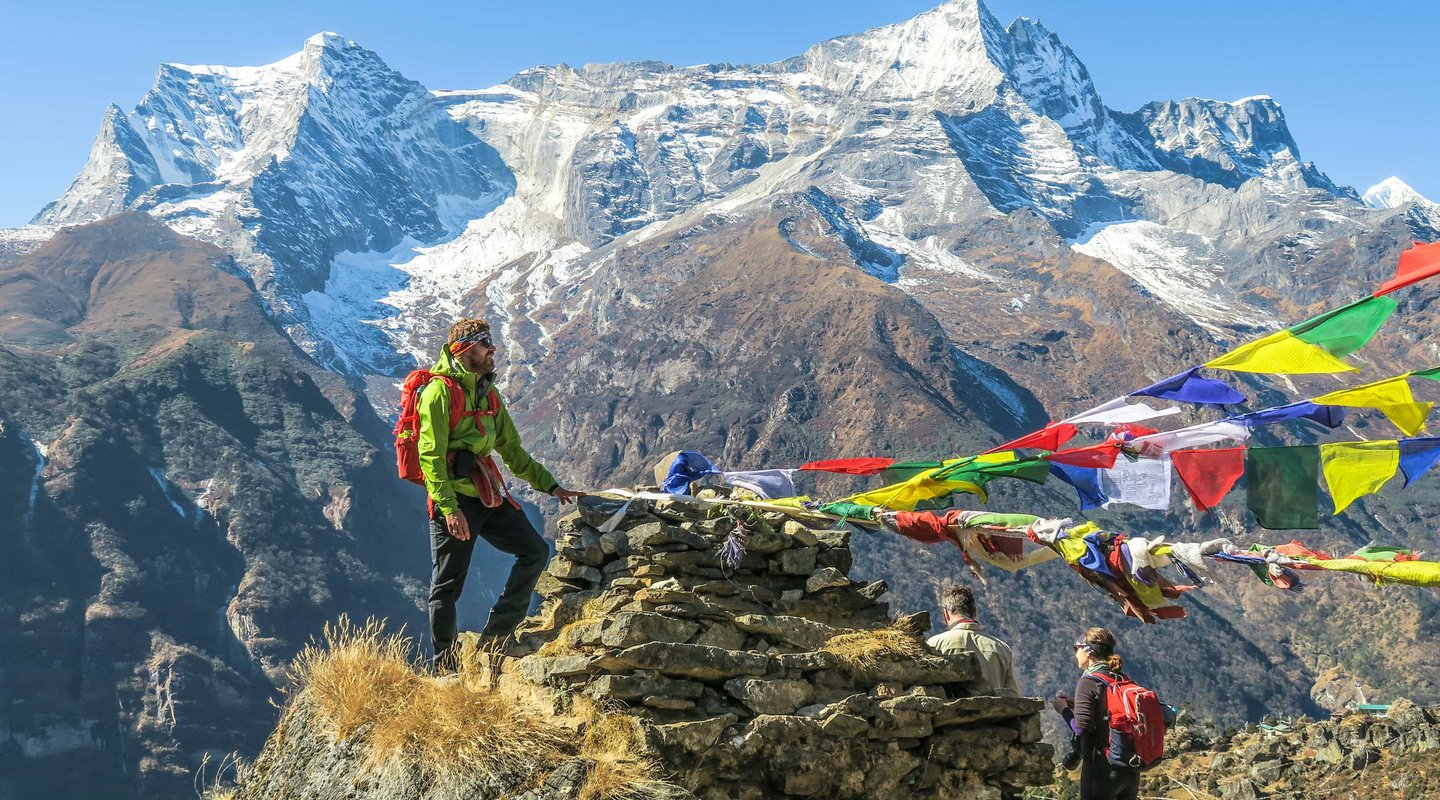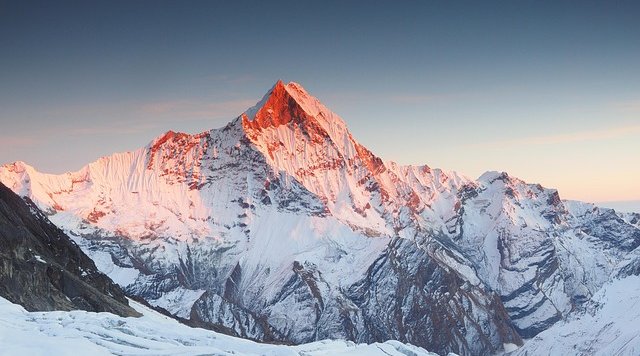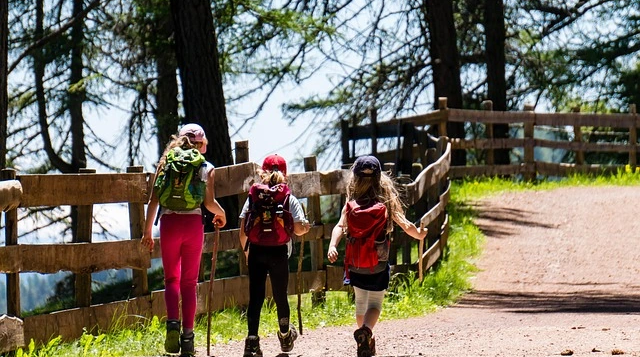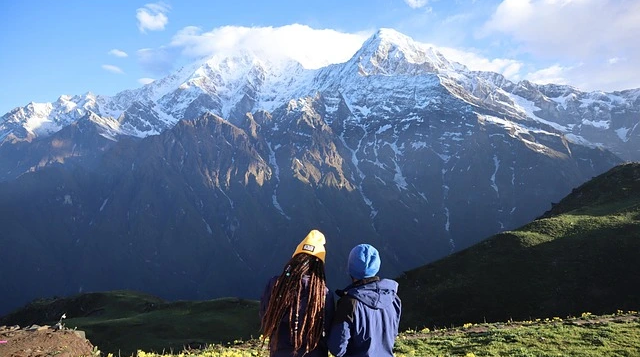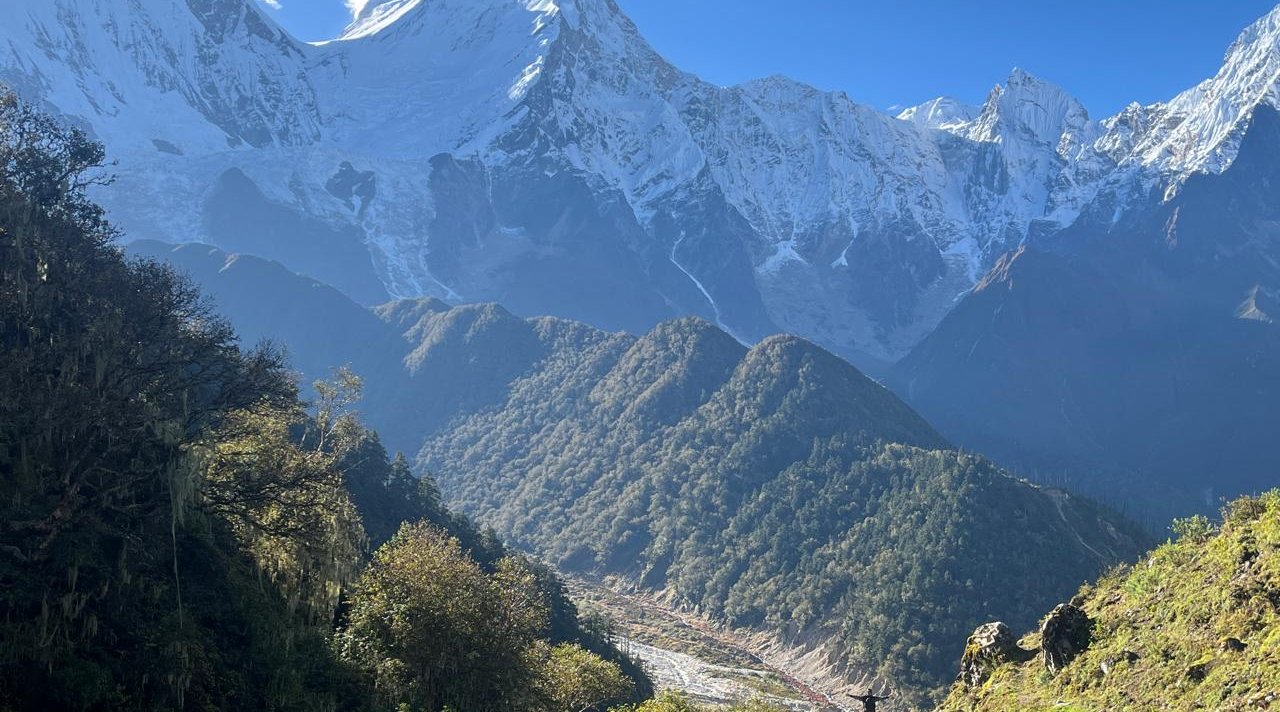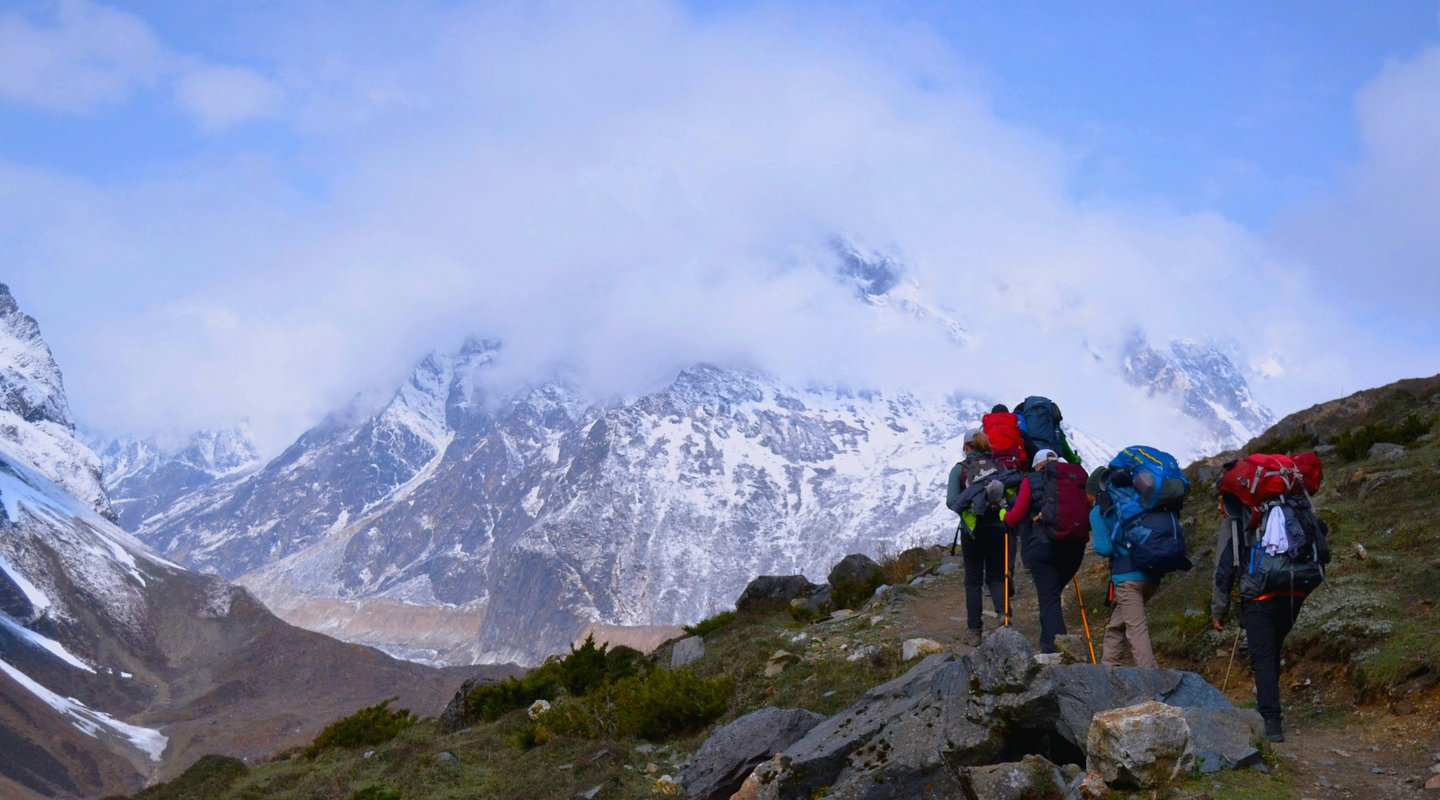Choosing the Everest Base Camp trek by road transforms your Himalayan adventure from a rushed tourist experience into a profound journey of discovery. While most trekkers automatically book flights to Lukla, savvy beginners are discovering the remarkable advantages of the overland approach. This comprehensive guide reveals why the road route offers superior value, safety, and experiences for first-time trekkers.
Financial Benefits
40% Cost Savings vs Flight Route
The cost of Everest Base Camp trek by road vs flight reveals significant savings that fund other Nepal adventures. Your budget Everest Base Camp trek by road typically costs $700-1,500 compared to $1,200-2,500 for flight packages.
Breaking down the savings:
- Kathmandu to Lukla flights: $434 roundtrip (eliminated)
- Weather delay costs: $50-100 daily in Lukla (avoided)
- Emergency helicopter fees: $500-600 (rarely needed on road)
- Lower tea house prices in road-approach villages
- Cheaper gear rental rates outside tourist hubs
These savings mean you can afford better accommodation, hire an additional porter, or extend your Nepal stay. The financial advantage becomes even greater for groups sharing jeep costs.
Predictable Budget Benefits
The Everest Base Camp trek by road weather independent nature eliminates costly surprises. Flight cancellations trap trekkers in expensive Lukla hotels, sometimes for days. Road trekkers avoid this budget uncertainty entirely.
Your expenses remain predictable:
- Fixed jeep/bus costs regardless of weather
- Consistent daily spending in villages
- No last-minute helicopter booking pressure
- Accommodation always available
- Food prices more stable in the lower regions
This predictability helps beginners plan accurately. You won't face the stress of dwindling funds due to unexpected delays. The road route respects your budget constraints while delivering superior experiences.
Group Discount Opportunities
Road travel opens unique group savings unavailable to flight trekkers. Private jeep hire becomes economical when split among 4-6 trekkers, reducing individual costs to public bus levels while gaining comfort and flexibility.
Group advantages include:
- Shared vehicle costs (up to 60% savings)
- Bulk accommodation negotiation power
- Group guide rates
- Shared porter services
- Equipment sharing possibilities
Solo travelers easily find trek partners for cost-sharing. The longer road journey naturally creates bonding opportunities before the trek begins.
Health & Safety Advantages
Superior Acclimatization Profile
The gradual altitude gain Everest trek by road provides represents its greatest health benefit. Starting at 1,400m and slowly ascending prevents the altitude shock experienced by flight arrivals at 2,860m.
Your body experiences natural adaptation through progressive elevation:
- Day 1-2: 1,400m to 2,200m (gentle introduction)
- Day 3-4: 2,200m to 2,700m (noticeable but manageable)
- Day 5-6: Variable elevations for acclimatization
- Day 7+: Well-prepared for higher altitudes
This Everest trek better acclimatization translates to 40% fewer altitude sickness cases. You'll sleep better, maintain appetite, and enjoy higher energy levels throughout the trek.
Weather Independence Makes Trekking Safer
The question "is Everest Base Camp trek without flight safer?" has a clear answer: yes. Weather-related risks decrease dramatically when you're not dependent on mountain aviation.
Road route safety advantages:
- No dangerous Lukla landing attempts
- Freedom from flight cancellation stress
- Multiple exit points if weather deteriorates
- Gradual descent options for emergencies
- Year-round accessibility
The psychological safety of knowing you can leave anytime reduces anxiety. This mental comfort improves physical performance at altitude. The Everest Base Camp trek without Lukla flight eliminates the most statistically dangerous part of the journey.
Reduced Altitude Sickness Risk
Scientific studies confirm the road route's health advantages. The extra acclimatization days significantly reduce acute mountain sickness (AMS) incidence and severity.
Altitude sickness prevention benefits:
- 40% lower AMS occurrence rate
- Milder symptoms when they appear
- Better hydration maintenance
- Improved sleep quality throughout
- Higher summit success rates
Your body produces more red blood cells during the gradual ascent. This natural adaptation process can't be rushed, making the road route medically superior for beginners.
Flexible Emergency Options
Medical emergencies require quick decisions. The road route provides multiple evacuation options impossible from remote airstrips.
Emergency advantages include:
- Road access from lower villages
- Multiple hospital options en route
- Cheaper evacuation costs
- Faster response times below 3,000m
- Communication availability throughout
This flexibility proves invaluable for beginners who may experience unexpected health issues. Guides can make graduated decisions rather than costly helicopter evacuations.
Experience Enhancement
Cultural Immersion Depth
The Everest trek cultural immersion road route exposes you to authentic Nepal few tourists witness. The journey through middle hills reveals diverse ethnic communities, each with unique traditions.
Cultural encounters include:
- Tamang villages with distinct architecture
- Rai communities maintaining ancient customs
- Progressive transition to Sherpa culture
- Local markets untouched by tourism
- Agricultural practices across elevations
You'll witness daily life rather than tourist performances. Children walk to school, farmers tend fields, and villages conduct business normally. This authentic exposure enriches your understanding of Nepal beyond mountain views.
Landscape Transition Witness
The Everest Base Camp trek by jeep drive from Kathmandu begins an incredible topographical journey. You'll witness Nepal's stunning diversity from subtropical valleys to alpine wilderness.
Landscape progression fascinates:
- Terraced farmlands near Kathmandu
- Lush middle hills with rhododendron forests
- River valleys carving through mountains
- Progressive vegetation changes
- Gradual emergence of snow peaks
This complete environmental transition helps you appreciate the Himalayas' true scale. Flight passengers miss this contextual journey, arriving suddenly in alpine terrain without understanding the geographical progression.
Fewer Crowds in Lower Sections
The Everest trek road route less crowded experience particularly benefits beginners seeking peaceful starts. While Lukla suffers tourist congestion, road approach villages maintain tranquility.
Crowd advantages include:
- Peaceful early trek days
- Better tea house availability
- Personal guide attention
- Photography without crowds
- Authentic village interactions
You'll build confidence in quieter settings before joining main trail crowds. This gradual social adjustment helps introverted trekkers particularly.
Extended Adventure Timeline
The longer journey becomes an advantage, not a drawback. Extra days mean richer experiences and better physical adaptation.
Extended timeline benefits:
- No rushed feelings
- Time for side explorations
- Rest days without guilt
- Deeper local connections
- Better photography opportunities
The journey becomes as important as the destination. You'll return with stories from the entire adventure, not just base camp achievements.
Beginner-Specific Benefits
Confidence Building Progression
The Everest Base Camp trek for beginners via road offers ideal confidence development. Each day builds upon previous achievements without overwhelming challenges.
Progressive confidence builders:
- Gentle initial days establish routine
- Gradual difficulty increases
- Early success experiences
- Time to master equipment use
- Social comfort development
By the time you reach traditional starting points, you're already an experienced trekker. This preparation dramatically improves summit success rates for first-time trekkers.
Equipment Testing Opportunities
The Everest Base Camp trek preparation for road route includes valuable gear testing time. Lower elevations allow equipment adjustments without serious consequences.
Testing advantages include:
- Boot break-in on easier terrain
- Layer system refinement
- Pack weight optimization
- Identify missing items early
- Practice with trekking poles
You'll identify and solve equipment issues before reaching challenging sections. This preparation time proves invaluable for beginners unfamiliar with mountain gear.
Guide Relationship Development
The beginner friendly Everest Base Camp trek road option provides extended guide bonding time. Strong guide relationships enhance safety and enjoyment throughout the trek.
Relationship benefits:
- Understanding communication styles
- Building mutual trust
- Learning guide's experience
- Developing trek rhythm together
- Creating lasting friendships
Your guide learns your strengths and limitations during easier days. This knowledge helps them support you effectively during challenging moments. The road journey transforms hired guides into trusted partners.
Environmental & Social Impact
Lower Carbon Footprint
Choosing road travel reduces your environmental impact significantly. The sustainability benefits appeal to conscious travelers seeking responsible adventure options.
Environmental advantages:
- Shared vehicle transportation
- No aviation fuel consumption
- Support for local transport systems
- Reduced waste in pristine areas
- Lower overall resource use
Each flight to Lukla burns approximately 100 liters of aviation fuel per passenger. Road travel's shared vehicle approach dramatically reduces individual carbon footprints.
Support for Lower Valley Communities
The Everest Base Camp trek road route cultural villages benefit directly from trekker spending. These communities receive minimal tourism income compared to main trail villages.
Community support includes:
- Tea house income in overlooked villages
- Local porter employment
- Small shop purchases
- Cultural exchange opportunities
- Infrastructure development incentive
Your spending creates positive impacts throughout the journey. Villages invest tourism income in schools, health posts, and community projects. The road route spreads tourism benefits more equitably.
Making the Right Choice for You
Decision Framework
The EBC trek road vs flight comparison ultimately depends on personal priorities. Consider these factors when making your decision:
Choose road if you value:
- Budget consciousness
- Superior acclimatization
- Cultural immersion
- Flexible scheduling
- Environmental responsibility
Choose flight if you prioritize:
- Time efficiency
- Classic EBC experience
- Immediate mountain access
- Group tour coordination
- Photography focus
Most beginners find road route advantages outweigh the extra time investment. The question "is Everest Base Camp trek by road easier for beginners?" consistently receives positive answers from those who've experienced both options.
Common Misconceptions Debunked
Several myths discourage road route consideration. Let's address these misconceptions with facts:
"The road journey is boring" - False. The landscape diversity and cultural encounters provide constant interest. Many trekkers report the approach journey as their favorite part.
"It's too physically demanding" - False. The gradual progression actually makes it easier than sudden altitude exposure. Your fitness builds naturally during approach days.
"You miss the classic experience" - False. You experience everything flight trekkers do, plus additional authentic encounters. The destination remains identical.
"Weather makes roads dangerous" - Partially true but manageable. Monsoon landslides occasionally cause delays, but alternative routes usually exist. Winter snow rarely affects lower sections.
Experience all these benefits with our expertly designed Everest Base Camp trek by road beginner's guide that maximizes every advantage for first-time trekkers.
FAQ Section
Why choose Everest Base Camp trek by road?
Why choose Everest Base Camp trek by road becomes clear when considering the comprehensive benefits. Superior acclimatization reduces altitude sickness by 40%. Costs decrease by $500-1,000 compared to flying. Cultural immersion through 15+ additional villages enriches the experience. Weather independence eliminates flight cancellation stress. The gradual progression builds confidence for beginners.
Is Everest Base Camp trek by road easier for beginners?
Yes, the road route is significantly easier for beginners. The gradual altitude gain from 1,400m prevents altitude shock. Extra days allow natural fitness development. Equipment issues get resolved on easier terrain. Guide relationships develop before challenging sections. The overall success rate for beginners increases by approximately 25% on road routes.
How much does Everest Base Camp trek by road cost vs flight?
The road route costs $700-1,500 per person versus $1,200-2,500 for flight packages. Breakdown: road transport $20-200, extra accommodation $100-150, additional meals $60-80, but no flight costs ($434) or weather delays. Groups save even more by sharing vehicle costs. The 40% average savings fund better services or extended travel.
What is the best time for beginners to do EBC trek by road?
The best time Everest Base Camp trek by road beginners should consider is October-November or March-April. These months offer stable weather, moderate temperatures, and clear mountain views. The road route's flexibility allows September or May travel when flights often cancel. Winter remains possible for experienced cold-weather enthusiasts.
What are the hidden benefits of Everest Base Camp trek road route?
The Everest Base Camp trek road route hidden benefits include deeper local friendships, photography opportunities in uncrowded locations, gradual social adaptation, natural training progression, and discovering hidden gems like Junbesi village. You'll collect unique stories unavailable to flight trekkers and develop stronger mental resilience through the extended journey.
Is Everest Base Camp trek without Lukla flight safer?
Statistics confirm Everest Base Camp trek without flight safer for multiple reasons. You avoid Lukla airport's challenging landing conditions. Weather doesn't trap you in remote locations. Emergency evacuation options multiply. The gradual altitude gain prevents severe AMS. Mental stress decreases without flight uncertainty. Overall risk reduces by approximately 30%.
How does gradual altitude gain help trekkers?
Gradual altitude gain allows natural physiological adaptation impossible with rapid ascent. Your body produces additional red blood cells progressively. Sleep quality remains better throughout. Appetite stays stronger, maintaining energy. Headaches and nausea occur less frequently. The 1,400m to 2,860m progression over 4-5 days versus instant flight arrival makes a dramatic difference.
What is the road route itinerary for beginners?
The Everest Base Camp trek road route itinerary for beginners typically follows: Days 1-2: Kathmandu to Junbesi (2,700m) via Jiri or Salleri. Days 3-5: Trek through Ringmo, Phakding to Namche. Days 6-14: Standard EBC route via Tengboche, Dingboche, Lobuche to Base Camp. Days 15-18: Return journey. This 18-20 day itinerary includes proper acclimatization and cultural experiences.
Conclusion
The Everest Base Camp trek by road emerges as the superior choice for beginners seeking safe, affordable, and culturally rich Himalayan adventures. The 40% cost savings, dramatically reduced altitude sickness risk, and authentic cultural immersion create unmatched value. Weather independence and flexible pacing remove the stress factors that challenge many first-time trekkers. The gradual progression from Kathmandu's bustle to Everest's grandeur provides the complete Nepal experience that flight-dependent treks simply cannot match.
Your decision to choose the road route reflects wisdom, not compromise. You're selecting deeper experiences over convenience, safety over speed, and authentic encounters over tourist bubbles. The additional days become treasured memories, not obstacles to endure. Start planning your transformative journey today – the mountains await, and the road less traveled leads to greater rewards.

